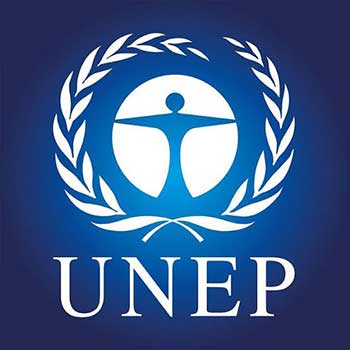UNEP new report on environmental impacts of export of used vehicles to developing world
UNEP recently released a new report titled " Used Vehicles and the Environment - A Global Overview of Used Light Duty Vehicles: Flow, Scale and Regulation", the first-ever report of its kind, which calls for action to fill the current policy vacuum with the adoption of harmonized minimum quality standards that will ensure used vehicles contribute to cleaner, safer fleets in importing countries.
The report shows that between 2015 and 2018, 14 million used light-duty vehicles were exported worldwide. Some 80 per cent went to low- and middle-income countries, with more than half going to Africa.
UN Environment Programme (UNEP) in it's report said that Millions of used cars, vans and minibuses exported from Europe, the United States and Japan to the developing world are of poor quality, contributing significantly to air pollution and hindering efforts to mitigate the effects of climate change.
Impact of global vehicle fleet on climate change and pollution :
The fast-growing global vehicle fleet is a major contributor to air pollution and climate change; globally, the transport sector is responsible for nearly a quarter of energy-related global greenhouse gas emissions. Specifically, vehicle emissions are a significant source of the fine particulate matter (PM2.5) and nitrogen oxides (NOx) that are major causes of urban air pollution.

Major finding of the report :
The report found that African countries imported the largest number of used vehicles (40 per cent) in the period studied, followed by countries in Eastern Europe (24 per cent), Asia-Pacific (15 per cent), the Middle East (12 per cent) and Latin America (nine per cent).
The report, based on an in-depth analysis of 146 countries, found that some two-thirds of them have ‘weak’ or ‘very weak’ policies to regulate the import of used vehicles. However, it also shows that where countries have implemented measures to govern the import of used vehicles – notably age and emissions standards – these give them to access high-quality used vehicles, including hybrid and electric cars, at affordable prices. For example, Morocco only permits the import of vehicles less than five years old and those meeting the EURO4 European vehicles emission standard; as a result, it receives only relatively advanced and clean used vehicles from Europe.
India and hybrid vehicle regime :
Government has approved Phase-II of FAME Scheme with an outlay of Rs. 10,000 Crore for a period of 3 years commencing from 1st April 2019. Out of total budgetary support, about 86 percent of fund has been allocated for Demand Incentive so as to create demand for Electric Vehicles (xEVs) in the country.
This phase aims to generate demand by way of supporting 7000 Electric Buses (e-bus), 5 lakh Electric Three Wheelers (e-3W), 55000 Electric Four Wheeler Passenger Cars (including Strong Hybrid) (e-4W)and 10 lakh Electric Two Wheelers (e-2W). However, depending upon off-take of different category of xEVs, these numbers may vary as the provision has been made for inter as well as intra segment wise fungibility. In addition, creation of Charging Infrastructure will also be supported under the Scheme.

About FAME 1 scheme :
Faster Adoption and Manufacturing of (Hybrid &) Electric Vehicles in India (FAME-India) Scheme is launched under National Mission on Electric Mobility in 2011/ National Electric Mobility Mission Plan 2020, unveiled in 2013.
The scheme aims to encourage progressive induction of reliable, affordable and efficient electric and hybrid vehicles (xEV).
The First Phase of the scheme was initially approved for a period of 2 years, commencing from 1st April, 2015. The Scheme has been extended from time to time, with the last extension allowed for a period up to 31st March 2019 .
It is under the frame work of Demand Incentive Disbursement
Mechanism. Incentive amount has been determined for each category of vehicle like Mild Hybrid, Strong Hybrid, Plug-in Hybrid and Pure Electric technologies and battery specification. It is implemented and monitored by National Automotive Board under D/o Heavy Industry. It is one of the DBT schemes categorized under in-kind mode.








